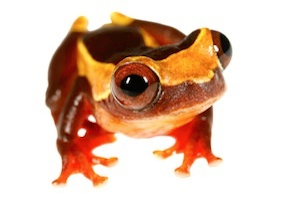The Ideal Reptile Enclosures: Just How to Create the Ideal Habitat
Creating the ideal habitat for reptiles is not just concerning positioning them in a container or unit; it entails a thoughtful factor to consider of various factors that add to their overall well-being. From the dimension of the room to the sort of substratum utilized, every aspect plays a crucial function in supplying an environment where your reptile can thrive. By recognizing the details demands of your reptile species and carrying out the best habitat setup, you can guarantee their health and wellness and joy in captivity.
Choosing the Right Enclosure Dimension
When picking an unit dimension for reptiles, it is imperative to consider their natural behaviors and space needs to guarantee their wellness and health. When it comes to habitat area, different reptile varieties have varying needs. Arboreal varieties like chameleons or tree serpents need vertical room for climbing and setting down, while terrestrial species such as bearded dragons or leopard geckos require more flooring area for checking out and thermoregulation. Aquatic turtles like red-eared sliders demand enclosures with both water and acreage for swimming and basking.
A basic guideline of thumb is to give ample room for the reptile to display natural habits, such as basking, concealing, climbing, and foraging. By carefully thinking about the details needs of the reptile types in inquiry, proprietors can develop an ideal and improving habitat that promotes general wellness and motivates natural behaviors.
Establishing Up Correct Home Heating Aspects
To guarantee the well-being and health of reptiles in their units, it is crucial to very carefully set up correct home heating elements. When establishing up heating components in a reptile room, it is vital to take into consideration the certain temperature needs of the types you are caring for.
One common and efficient heating component for reptile rooms is a heat light or ceramic warm emitter. These warmth sources can be made use of to produce a temperature level gradient within the unit, allowing reptiles to relocate between warmer and cooler areas as required. Additionally, under-tank home heating pads or heat mats can be made use of to offer stomach heat, which is specifically useful for reptiles that call for extra warmth to assist in digestion.
Keeping track of the temperature level within the unit making use of a thermometer is important to make certain that the burner are keeping the proper temperature level array for your reptile. Frequently examine and readjust the burner as needed to produce a healthy and balanced and comfortable atmosphere for your scaly good friend.
Picking Appropriate Lights Components

Supplying the Perfect Substrate
Choosing the appropriate substrate is vital for producing a comfortable and suitable setting for reptiles in their rooms. Some reptiles, such as desert-dwelling species like bearded dragons, thrive on substrates like calcium sand or reptile rug, while others, like ball pythons, favor coconut husk or aspen bed linens to preserve humidity degrees.
Prevent substratums that can trigger impaction, such as loosened substrates like sand or gravel, particularly for reptiles recognized to consume their bed linens. Regularly cleansing and changing the substratum is important to make certain a clean and sanitary setting for your reptile.
Decorating for Enrichment and Comfort
Thinking about the substrate's role in providing a structure for all-natural behaviors and maintaining an appropriate setting, improving the reptile enclosure with proper decors is vital for both enrichment and comfort. When decorating the enclosure, it is crucial to take into consideration the reptile's species-specific requirements and behaviors to develop an area that promotes psychological and physical well-being. By including a selection of decorations that resemble the reptile's natural habitat, proprietors can ensure their pet dog's comfort and stimulate their all-natural instincts, ultimately leading to a better and healthier reptile.
Final Thought

Producing the best environment for reptiles is not simply about placing them in a storage tank or room; it entails a thoughtful factor to consider of various elements that contribute to their general wellness.Picking the appropriate substrate is vital for developing a ideal and comfy environment for reptiles in their enclosures. Some reptiles, such as desert-dwelling species like bearded dragons, grow on substrates like calcium sand or reptile rug, while others, like sphere pythons, like coconut husk or aspen bed linens to keep moisture degrees.
By integrating a range of designs that simulate the reptile's all-natural habitat, proprietors can guarantee their pet dog's convenience and promote their natural impulses, ultimately leading to Extra resources a happier and healthier reptile.
In conclusion, creating the perfect habitat for reptiles entails picking the ideal unit dimension, home heating aspects, lighting fixtures, substrate, and decors.